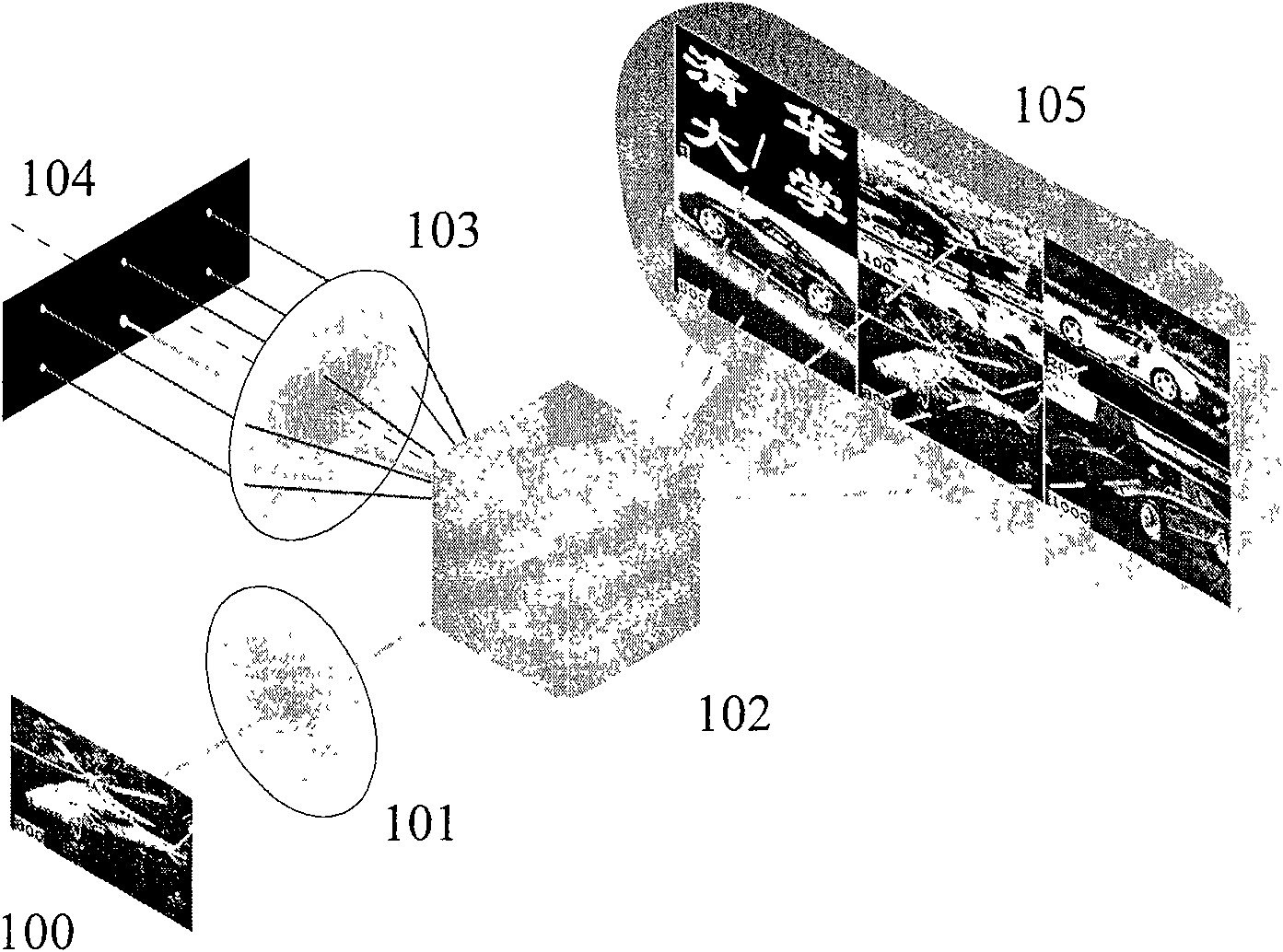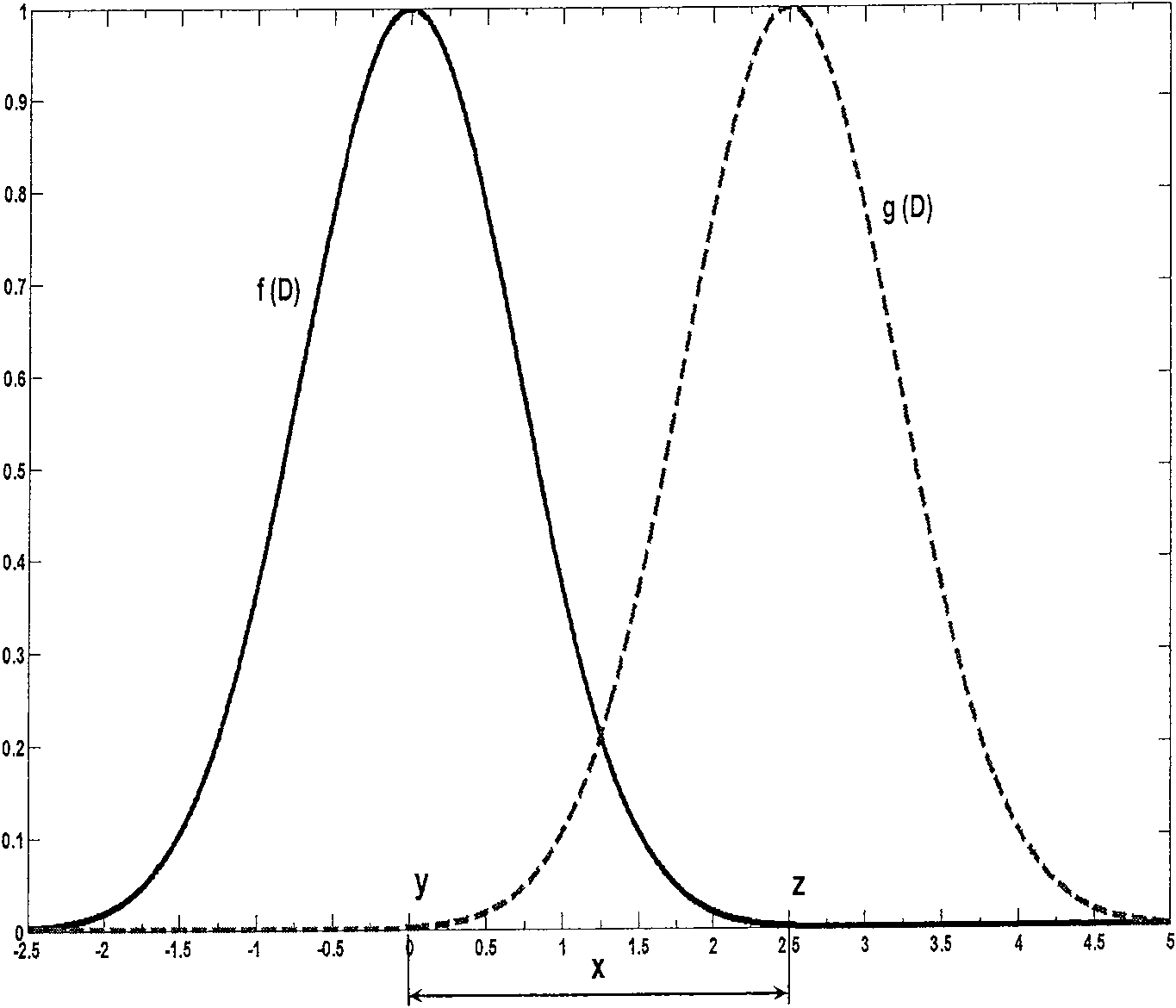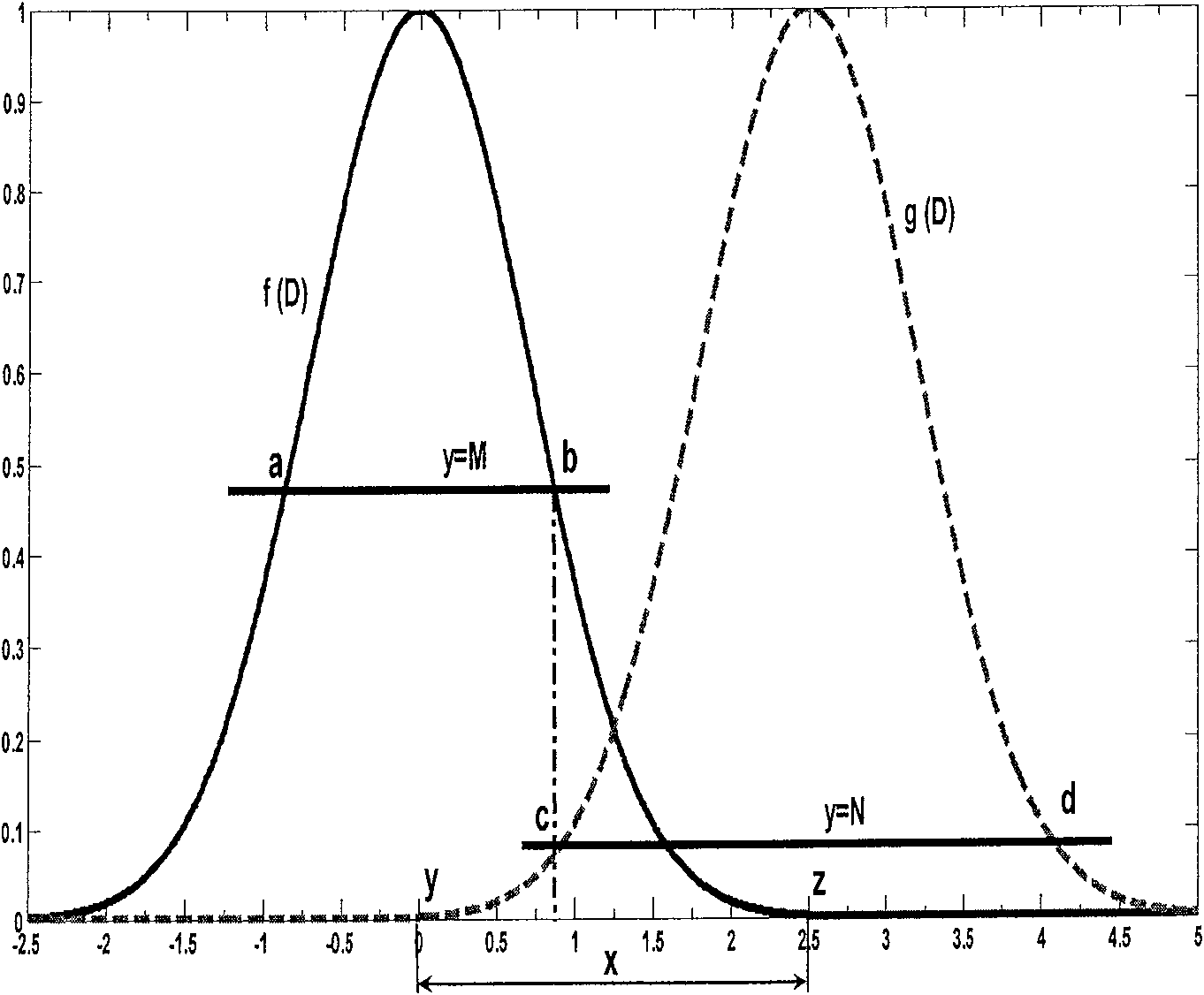Method for improving precision of volume holographic correlator through interpolation technology
A correlator and volume holography technology, applied in the field of interpolation technology, to achieve the effect of improving output accuracy
- Summary
- Abstract
- Description
- Claims
- Application Information
AI Technical Summary
Problems solved by technology
Method used
Image
Examples
Embodiment 1
[0076] This embodiment is an example of improving the accuracy by performing an interpolation technique on the library image and the input image applied to the volume holographic correlator. In the process of volume holographic recognition, there is a kind of problem of rotation distortion recognition, attached Figure 7 For embodiment 1 library image A, attached Figure 8 It is the image after 10 degrees of rotation distortion occurs clockwise to the original image in Example 1, with Figure 9 is the input real-time image, where the resolution of each image is 640×480. In this way, if interpolation processing is not used, the recognition result can only be the original image or a distorted image rotated 10 degrees clockwise, and the recognition accuracy is low. The process of using interpolation technology is as follows: record clockwise rotation as the positive direction, record the original image as A, the image with +10 degree distortion as B, and the real-time image as ...
Embodiment 2
[0085] Compared with the first embodiment, this embodiment is a planar two-dimensional embodiment. In the process of image translation recognition, the attached Figure 11 is the picture before translation, denoted as picture A; attached Figure 12 is an image shifted 10 pixels to the right, which is denoted as Figure B; Figure 13 is an image shifted up by 10 pixels, denoted as Figure C, attached Figure 14 is a real-time graph, denoted as D. The resolution of each image is 640×480. If the interpolation technology is not used, and a real-time image is input, the volume holographic recognition result can only be one of the above three images, and the recognition accuracy is 10 pixels. If interpolation technology is used, it can be further identified within 10 pixels, which greatly improves the identification accuracy.
[0086] The process of using interpolation technology is as follows:
[0087] 1. Store the library images A, B, and C in the volume holographic correlator...
Embodiment 3
[0096] Compared with the first embodiment, this embodiment is an example of reducing the number of stored samples while maintaining the same precision. attached Figure 19 The picture is a picture of nine consecutive frames of hall_monitor, and the resolution of each picture is 274×288. If interpolation technology is not used, nine pictures need to be stored while maintaining the recognition accuracy of one frame. Now using interpolation technology, only two pictures need to be stored. Among them, Figure 20 is the second frame in the above picture, denoted as picture A; attached Figure 21 is the eighth frame in the above picture, denoted as picture B; Figure 22 is a real-time graph. Mark it as D. While maintaining the recognition accuracy of one frame, the stored sample capacity is reduced.
[0097] 1. Store image A and image B into the volume holographic correlator.
[0098] 2. Input the image A and the image B into the volume holographic correlator to obtain the bri...
PUM
 Login to View More
Login to View More Abstract
Description
Claims
Application Information
 Login to View More
Login to View More - R&D
- Intellectual Property
- Life Sciences
- Materials
- Tech Scout
- Unparalleled Data Quality
- Higher Quality Content
- 60% Fewer Hallucinations
Browse by: Latest US Patents, China's latest patents, Technical Efficacy Thesaurus, Application Domain, Technology Topic, Popular Technical Reports.
© 2025 PatSnap. All rights reserved.Legal|Privacy policy|Modern Slavery Act Transparency Statement|Sitemap|About US| Contact US: help@patsnap.com



